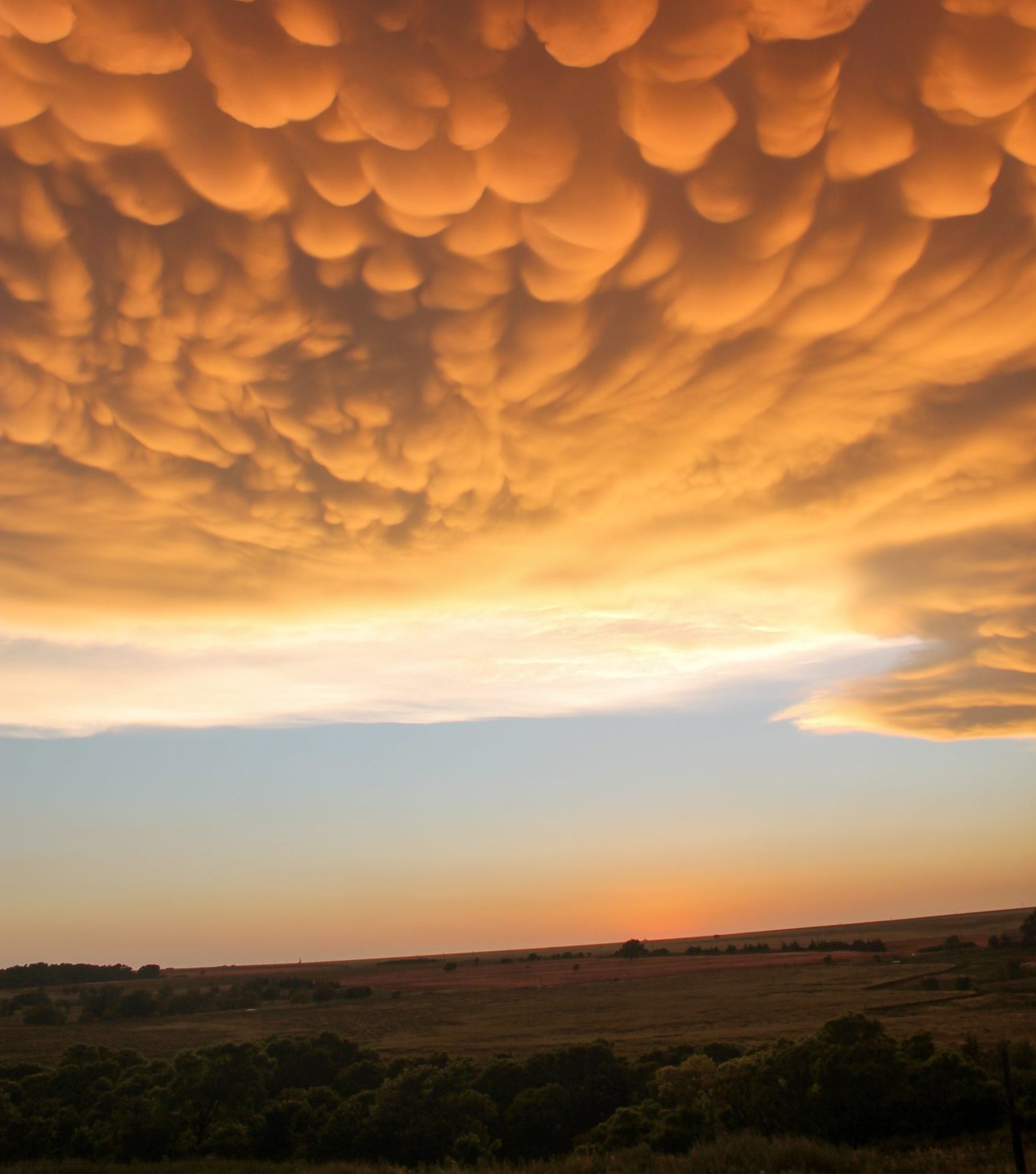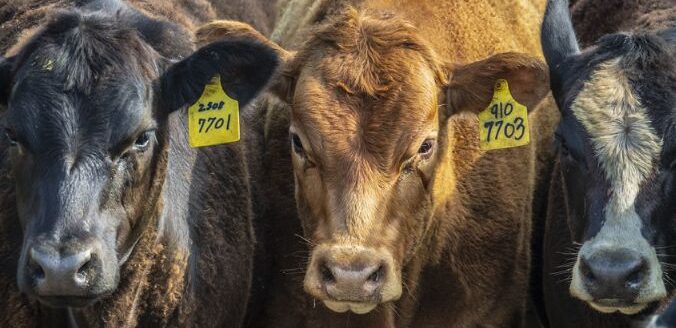Being weather aware takes a little planning

No one is more aware of weather conditions than farmers and ranchers. Most observe the weather outside simply because they’re out in the elements and their livelihoods depend upon it.
Often they are first to recognize the signs of drought or severe weather. Those who work outside need to be aware of ever-changing weather conditions and their dangers to them and their livestock to keep everyone safe.
Drought tendencies
According to Joel Lisonbee, with the NOAA/National Integrated Drought Information System and Cooperative Institute for Research in Environmental Sciences at University of Colorado-Boulder, a drought is an abnormally dry period that adversely impacts water supply.
“My favorite definition of drought is ‘anytime water supply does not meet water demand’ with the caveat that when measuring drought, we usually look at natural changes in the water supply side of that equation,” he said.
There are two main drivers of drought, either warm temperatures or a lack of precipitation, which emerge because of atmospheric patterns.
“Sometimes drought can be attributed to naturally occurring slow variations in our climate system, such as changes in ocean surface temperature patterns,” Lisonbee said. “These patterns, such as El Niño or La Niña, can have ripple effects on weather patterns around the world.”
Jet streams shifting north or south or creating persistent high-pressure patterns over the same place for a long period of time could cause changes too.
“These are usually described as ‘precipitation deficit droughts’ or long periods when there simply isn’t enough rainfall,” he said.
Sometimes drought develops from persistent high temperatures and these “temperature driven droughts” can happen even when you receive enough precipitation, but it evaporates before it can really become useful.
“These temperature driven droughts can sometimes onset very rapidly; we call these ‘flash droughts,’” he said. “They can also create drought-like conditions even for irrigated agriculture. Temperature driven droughts are becoming more frequent and severe in many parts of the world.”
Agricultural producers can take advantage of a couple of resources to monitor and help prepare for drought conditions. Lisonbee said NIDIS has resources on drought.gov that would be useful for agricultural producers. Overlays on the latest U.S. Drought monitor maps are helpful too for agricultural regions. Producers can sign up for email updates anytime the US Drought Monitor changes a category on their farm, he said. They can sign up at https://www.drought.gov/drought-alerts/signup.
The Southern Plains Drought Early Warning System sends out emails with drought early warning statements or drought status updates. Producers can sign up for these emails by subscribing to the Southern Plains DEWS listserv. The latest long-range forecasts for drought, precipitation, temperatures and evaporation are available on https://www.drought.gov/forecasts
Safety considerations with drought
Wildfires are often tied to drought conditions because of the prolonged heat and lack of precipitation, which dries out vegetation making it more flammable.
“This is especially true when a drought follows a wet period when there was ample vegetation growth,” Lisonbee said. “That vegetation then dries out and can easily burn. In the High Plains, it is common to see a wet spring followed by a drier summer, but if Mother Nature turns on extra rain in spring and then turns off the rain and cranks up the temperature in a droughty summer, then the fire risk gets amplified.”
Multi-year drought can sometimes lower fire risk when there was not much vegetation growth in the previous season, he said.
“Farmers and ranchers should really be aware of how much dry vegetation is on their farm when gauging their fire risk and consult their local fire brigade for potential burn bans or to obtain burning permits (where required),” he said. “The USDA Midwest Climate Hub has a great resource for managing on-farm fire risk.”
Lisonbee said to check www.climatehubs.usda.gov/hubs/midwest/topic/managing-risk-field-and-equipment-fires-midwest for more information.
“Remember that on hot, dry days, if there is fuel, wind and a spark, then fires can get out of control pretty quickly,” he said.
Severe weather considerations
When it comes to tracking weather conditions and forecasts, weather consultant Jeff Hutton said it’s gotten tough to find the most factual sources.
Sign up for HPJ Insights
Our weekly newsletter delivers the latest news straight to your inbox including breaking news, our exclusive columns and much more.
“It’s become a bad deal because of the internet. There’s a lot of places you can get data that just are not quite reliable,” Hutton said. “But the agency I worked for a long, long time, National Weather Service, they have individuals at 120-plus offices nationwide dedicated to their specific areas. So you’ve always got someone who’s constantly watching that.”
Social media has become a good source—especially for forecasting and warning information. It can quickly get out to those who are wanting and/or needing it on places like Facebook and X (formerly Twitter). Go straight to the source for warnings though, the NWS recommends. Television and radio stations remain excellent sources, and there are news outlets with apps available for weather and warnings.
Hutton said it’s important to remain weather aware, particularly for those working outdoors.
“Especially for anyone out tending the livestock or as they’re doing their crops and things like scouting, planting, harvesting, whatever—they’re out in the elements away from shelter most cases,” he said. “A vehicle can become shelter in many situations, especially for lightning.”
Have a plan when you’re away from shelter and for those in agriculture, this is probably the biggest safety risk many have when storms are approaching.
“If it (severe weather) reaches me, I’m going to have to depart and I’ve already got something in my mind where I’m going to go and I’m gonna get there,” he said. “I think for anyone outside the risk is a little bit higher.”
Being familiar with weather terminology and what that means is important in severe weather situations. For example, knowing a tornado will likely impact a relatively small area, whereas a thunderstorm could impact a couple of counties, is critical to staying safe.
“A lot of times the wind associated with that can be widespread,” Hutton said. “If the wind gets up to around 60 miles an hour or so, we’re getting a little bit of damage and when I say damage I’m talking about small branches, maybe shingles or something like that.”
Especially in the High Plains and central United States, there are a lot of storms capable of producing 80 to 100 mph winds, Hutton said the best solution for those situations is to stay away from something that’s going to blow apart.
“Stay away from maybe a poorly constructed building with something that risks coming off the roof or a partial collapse or something like that,” he said.
When caught in a vehicle during strong winds Hutton tells people to either face it into the wind or face it away from the prevailing wind direction.
“You don’t want to do perpendicular because you could roll likely, but I think the biggest thing is just stay away from something that could fall on you if it was blown,” he said. “And of course, on the Plains we have an issue with pivot sprinklers. Those will start to roll about 75 to 80 miles an hour. You get up to 100 miles an hour—they could roll several times and then obviously be mangled.”
Livestock stress
When Hutton was at NWS, livestock advisories were issued when conditions were stressful for livestock and animals because of it being cold and wet. Now as a weather consultant, he advises his clients using the long-range forecasts.
“In preparation of perhaps a blizzard a week or week and a half, two weeks out—if they’re still out on the wheat or grass or whatever, if still feeding—preparing the livestock for some shelter,” he said. “Either you have to move them, get them out of there or provide extra feed.”
It takes time to prep for weather with livestock because it takes time and planning for transport or travel. The long-range outlooks will allow producers to buy some extra feed if the weather is looking particularly challenging or conditions are looking harsh. On the other side of the coin, if things have switched and it’s not as challenging for livestock, his clients might even be able to liquidate extra feed if needed.
Other considerations
Around the farmstead, when severe weather strikes Hutton said it’s often electricity that’s lost.
“A lot of farmsteads have generators, but some if they lose power, they may not get power for a week or two just because of their location but especially in winter storms,” he said. “If we’re looking at a lot of icing, preparing for that possibility of power outages that could extend it for days on end.”
In some areas of the country, derecho winds will cause power outages that can knock electricity out for days.
One thing that often comes with severe weather is flooding, especially when water is covering roadways.
“A lot of the rural folks are on county roads. They might have low spots or water issues and they’ve always driven through it, no problem,” he said. “But what a rain occurs and water’s just a little bit deeper—automobiles, tractors everything will float at a certain depth.”
Be wary of those low water crossing areas and bridges during flooding conditions, he said. It’s not worth it sometimes to take a chance.
“We’ve all had times (where) we probably shouldn’t have taken a chance, but you got to get from A to point B,” he said. “You don’t want to have to take the long route around, so you think, ‘I can make do there.’ Something happens and you get stuck out there.”
Kylene Scott can be reached at 620-227-1804 or [email protected].



